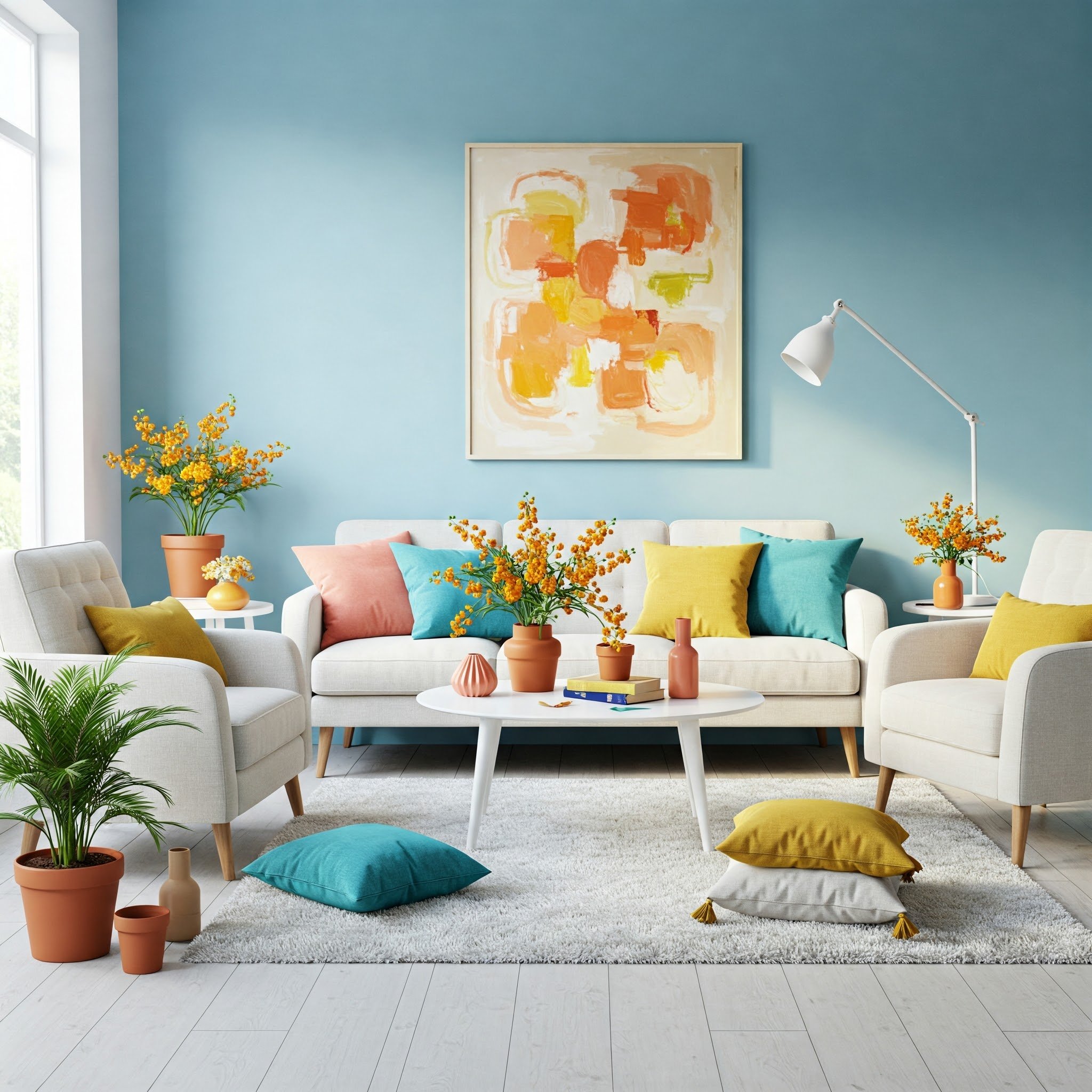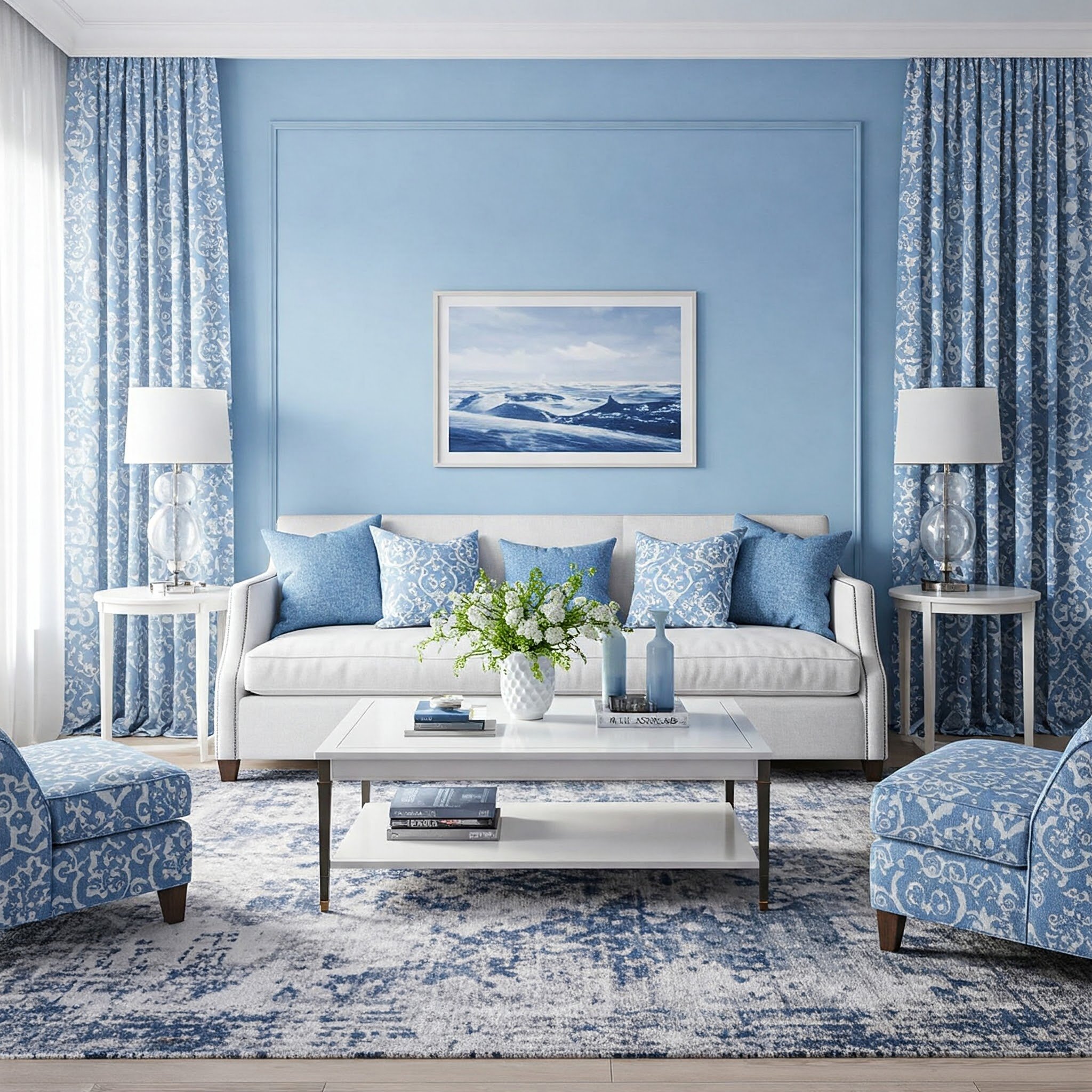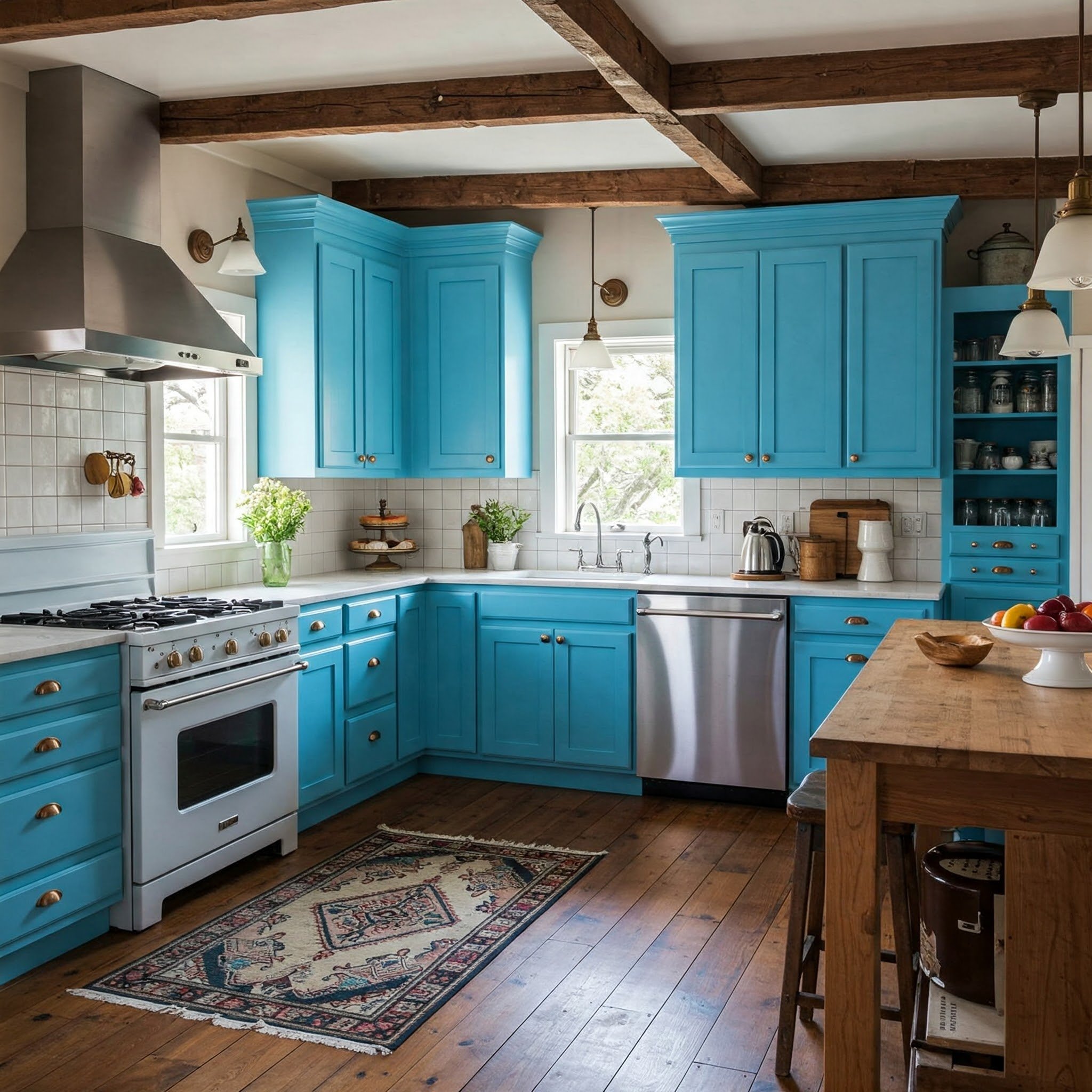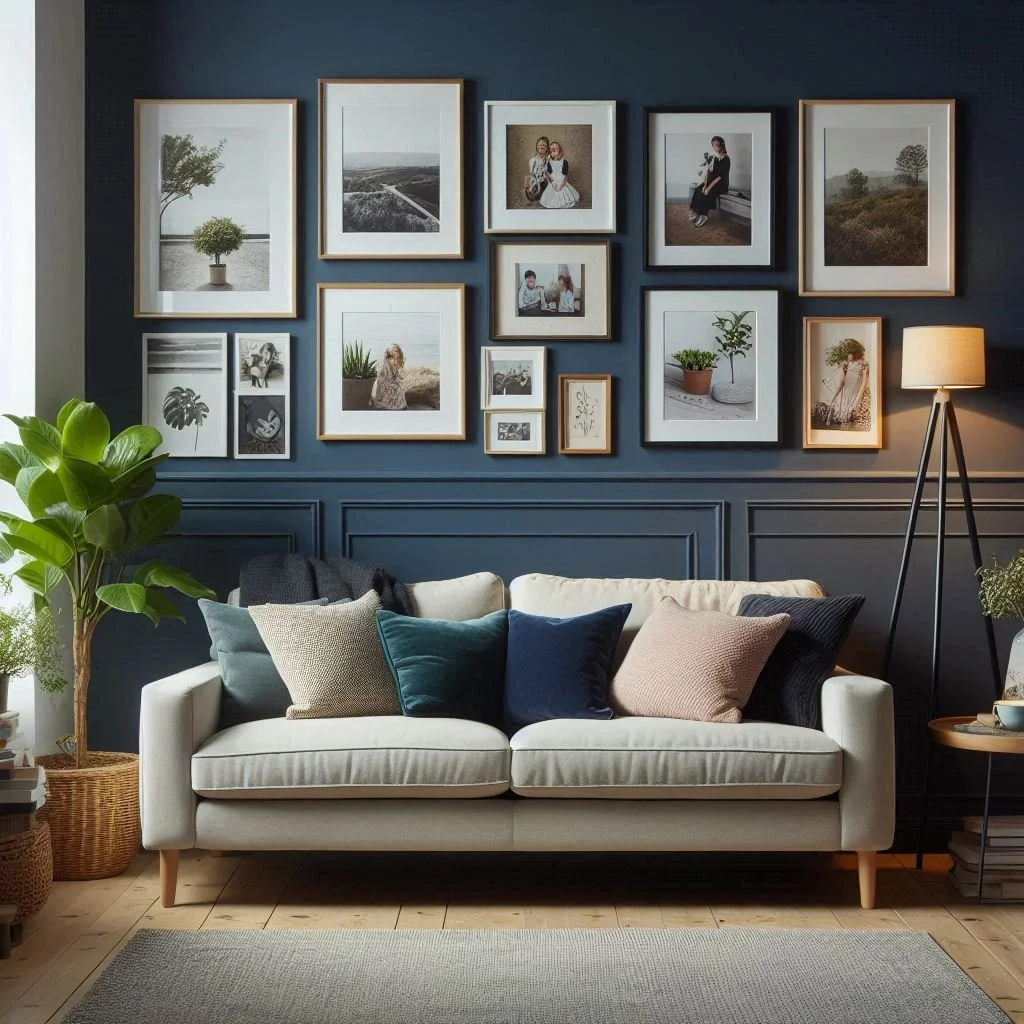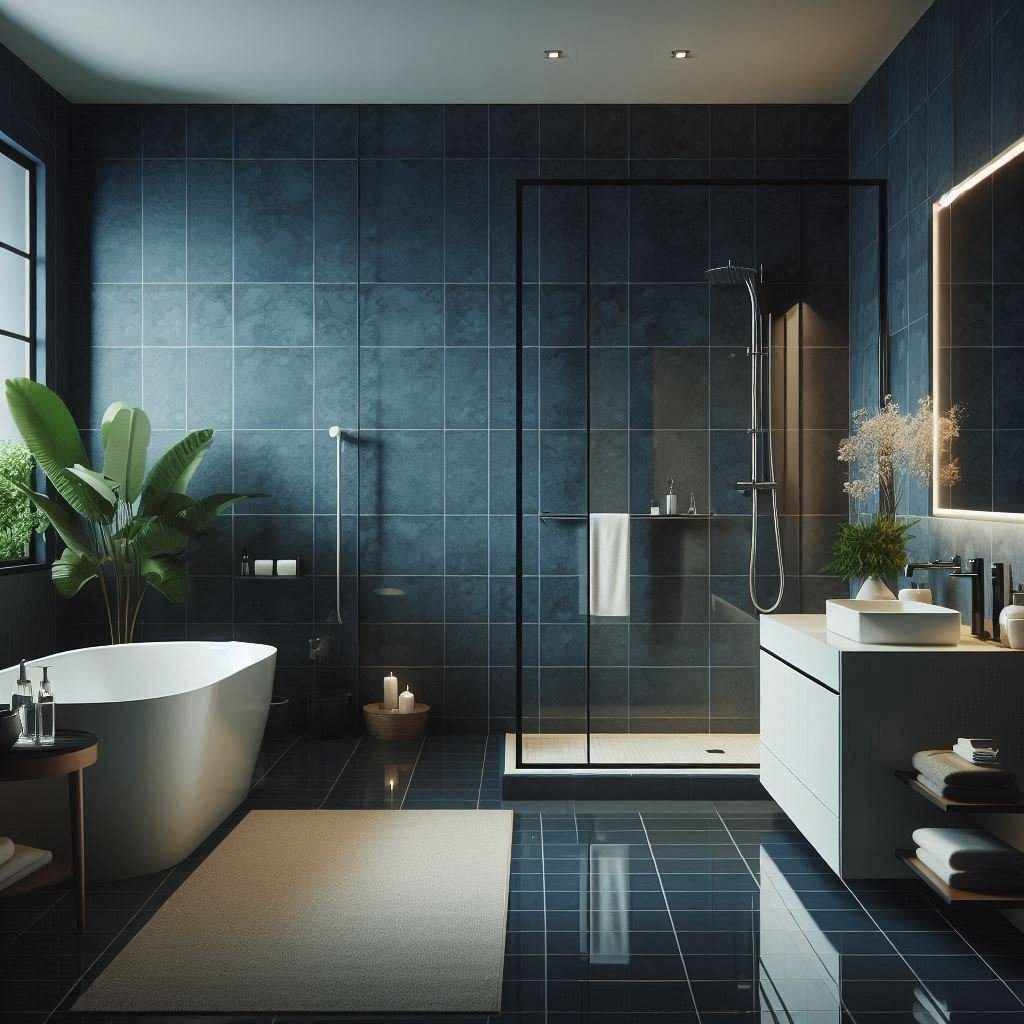15 Stunning Blue and White Room Ideas to Try
Refresh your home with these 15 blue and white room ideas that blend coastal charm, timeless elegance, and a dash of personal flair. Explore styles perfect for every space.
Do you ever walk into a room and feel instantly soothed, like a gentle ocean breeze just whispered across your face? Blue and white interiors tend to have that effect, offering a classic palette that feels both fresh and comforting. Maybe it’s the nod to seaside living or the crisp contrast these two shades create together—whatever the reason, a blue-and-white color scheme easily transforms any space into a serene oasis. Whether your style leans modern and minimalist or rustic and cozy, there’s a way to weave these hues into your décor for that unmistakable pop of sophistication. Ready to dive into the world of tranquil blues and clean whites? Keep reading for 15 stunning ideas that will help you craft the perfect coastal-inspired vibe in your own home.
1. Setting the Tone: Why Blue and White?
Blue and white have stood the test of time, popping up in everything from ancient porcelain to modern beach houses. So, why do these two colors pair so effortlessly? Think of it like the yin and yang of interior design: white embodies purity and simplicity, while blue evokes calm and comfort. Together, they balance each other out—like a sweet melody with just the right bassline. When you enter a room where these hues reign, you often feel an immediate sense of relaxation, almost as if the stresses of your day melt away in the cool breeze of the color scheme. Plus, blue and white can be adapted to a variety of themes—coastal, contemporary, traditional, even boho-chic. It’s like having a universal translator for décor styles. If your aim is to craft a sanctuary that feels both airy and grounded, blue and white might just be your ideal starting point.
2. The Power of Accent Walls
Have you ever wanted to dip your toe into the blue-and-white trend without flooding an entire space with bold color? That’s where accent walls come in, serving as the hero of a room by adding a focused pop of blue against bright, clean white surroundings. An accent wall can be as dramatic as a deep navy painted surface or as subtle as a patterned wallpaper in lighter, powdery blue shades. Think of it as your canvas to experiment—whether you choose geometric shapes, delicate floral patterns, or a textured finish to add depth. By confining the bolder shade to a single wall, you allow it to make a statement without overwhelming the room’s overall vibe. Plus, an accent wall can highlight a particular piece of furniture or art, drawing attention like a spotlight on the star of the show. It’s a fuss-free way to inject personality into your space.
3. Layers of Textiles: Rugs, Throws, and More
When you think of a welcoming, cozy environment, often it’s the textures that leave a lasting impression. Incorporating layers of textiles—such as rugs, pillows, and throws—helps ground a blue-and-white theme while adding warmth. Imagine draping a chunky knit blanket in soft navy over a crisp white sofa, or positioning a plush rug with intricate blue patterns beneath a wooden coffee table. These details create the kind of tactile comfort that invites you to sink in and stay a while—like stepping into a warm embrace. If your goal is a breezy, coastal-inspired look, lean towards lighter, breathable materials like cotton or linen. For a more lavish feel, you can opt for rich velvet pillows in royal or sapphire blue. Mixing multiple textures is like composing a symphony where each instrument (or textile) plays a unique role, ultimately harmonizing into one beautiful arrangement.
4. Mixing Patterns for a Dynamic Look
Does the idea of mixing patterns feel intimidating? Don’t worry—it’s easier than you might think, especially with a trusted palette like blue and white. Picture a bold, wide-striped rug in navy and white, paired with smaller geometric patterns on cushions or curtains. The key is to maintain a sense of balance: if one pattern is loud, choose a secondary pattern that’s more subdued. Think of it like choreographing a dance number—the star performer can take center stage while the supporting cast complements the show without stealing the spotlight. Polka dots, florals, and even abstract prints can all coexist if you keep the color scheme cohesive. This layered approach infuses energy and personality into a room, making it feel curated rather than chaotic. Remember, mixing patterns is about harmony, so trust your instincts and let your personal style guide you.
5. Incorporating Navy for Bold Statements
When it comes to blue, there’s a whole spectrum at your disposal, but navy stands out for its timeless and dramatic flair. Imagine a glossy navy cabinet against a backdrop of crisp white walls—instant sophistication. Navy can act like a grounding anchor in a room, much like the dark night sky to a sparkling constellation of lighter shades. Don’t be afraid to introduce navy through larger furniture pieces like sofas or built-in bookshelves; it can be the defining element that tethers an entire space. For a subtler touch, experiment with navy accessories—throw pillows, artwork frames, or decorative vases. The beauty of navy is its versatility: pair it with rustic woods for a cozy vibe or metallic accents for a glam finish. If you crave a refined, enduring look, incorporating navy could be the bold move your blue-and-white theme needs.
6. Embrace Coastal Décor Elements
If the words “blue and white” make you envision a tranquil seaside retreat, why not lean all the way into that coastal vibe? You could introduce nautical-inspired décor elements like rope mirrors, seashell ornaments, or driftwood art to reinforce the theme. Envision walking into a space that feels like a gentle ocean breeze is rolling through—white-washed walls, airy curtains, and hints of marine life scattered tastefully around. Add a few striped throws or accent pillows reminiscent of classic sailor patterns, and you’ll have a living area that whispers of lazy afternoons by the water. Even subtle additions like a jute rug or woven basket can nod to a beachy aesthetic, offering texture that’s pleasing to the eye. A coastal look doesn’t have to be clichéd; with a little restraint and thoughtful curation, it can be that perfect marriage between breezy and refined.
7. Balancing Warm and Cool Tones
While white and blue naturally lean toward the cooler end of the color spectrum, it’s essential to consider balancing them with warmer tones to avoid a space that feels chilly. Think wood accents—like a honey-toned coffee table or exposed wooden beams—to infuse an element of coziness. Even small décor pieces, such as a terracotta vase or woven basket, can introduce that earthy warmth your room might be missing. It’s a bit like layering your wardrobe for a mild afternoon: you have the crispness of cool air (blue and white) but need a cozy sweater (wood accents) to truly feel comfortable. Besides wood, warm metallics like brass or gold also stand out beautifully against a blue-and-white backdrop, adding a luxurious glint. By thoughtfully mixing in these warmer tones, you’ll achieve a more inviting space that feels both fresh and snug at the same time.
8. Getting Playful with Furniture Choices
Who says furniture has to fade into the background? In a blue-and-white room, your sofa, chairs, or tables can become statement pieces in their own right. Think of a bold cobalt blue armchair set against a sleek white rug, or a distressed white coffee table that pops against a navy-blue wall. If you’re feeling adventurous, consider painting vintage wooden chairs in a vibrant shade of blue—like cornflower or electric blue—for a whimsical touch. It’s kind of like accessorizing an outfit with a pair of head-turning shoes: even if the rest of your décor remains muted, one stand-out piece can shift the energy of the room. Just ensure you maintain a sense of unity by repeating that accent color elsewhere—maybe through a throw pillow or artwork—to tie the space together with flair.
9. Accessorizing with Pops of Color
Although blue and white make a striking duo, you might crave an extra jolt of color to spice things up. Picture a vase of bright yellow sunflowers perched on a glossy navy console, or a patterned rug with subtle hints of teal or coral interwoven with your primary palette. These unexpected pops function like exclamation points in a sentence, capturing attention and adding depth. If you want something more restrained, metallic touches—like rose gold candleholders or silver-framed mirrors—can also break the monotony without veering too far from your established theme. The trick is to keep these accents intentional and minimal so they enhance, rather than overshadow, the blue-and-white foundation. This approach keeps your design dynamic, ensuring that each piece tells a small part of a bigger story without clashing like a mismatched choir.
10. Lighting That Elevates the Aesthetic
Lighting isn’t just about illumination—it’s about shaping the room’s mood and highlighting its best features. In a blue-and-white space, consider fixtures that either blend seamlessly into your palette or stand out as a statement piece. Maybe you’ll opt for a white pendant lamp with a sleek design that disperses soft light throughout the room, akin to moonlight reflecting on gentle waves. Or you could go bolder with a stained-glass fixture incorporating various shades of blue, casting playful shadows on your walls. Floor lamps with metal finishes—particularly brass or chrome—can also offer a warm glow that contrasts with cool blue elements. Even strategically placed table lamps in white ceramic or navy bases can add layers to your lighting scheme. By mixing overhead, task, and accent lighting, you create an environment that feels both functional and serenely enchanting, inviting everyone to linger a while.
11. Stripes, Stripes, Stripes!
Few patterns capture the essence of blue and white quite like stripes do. They harken images of classic sailors’ attire and beach umbrellas—both undeniably tied to nautical vibes. But stripes aren’t limited to just coastal themes; they can also look sleek and modern in the right context. For instance, vertical stripes on a feature wall can make a space appear taller, like an architectural magic trick for low ceilings. Horizontal stripes on a rug or sofa can elongate a room, stretching it visually. You could also play with multiple widths or varying shades of blue to add complexity, much like layering musical notes in a harmonized tune. Stripes can be subtle—like faint pinstripes on curtains—or bold, dominating entire surfaces. However you choose to incorporate them, stripes deliver that iconic punch that says, “This room is fresh, fun, and ready to impress.”
12. Crafting a Serene Bedroom Retreat
Your bedroom should be the ultimate sanctuary, and a blue-and-white color scheme can do wonders for dialing down the daily stress. Picture white linens on a plush bed, accented by a navy headboard that feels both bold and comforting. Add a collection of decorative pillows in various shades of blue—powder, sky, cobalt—to mimic the changing hues of the ocean under different skies. If you have hardwood floors, consider a soft white or pale blue rug to greet your feet each morning. Think about layering textiles like curtains, throws, and cushions in gentle patterns or subtle stripes, akin to lullabies for your décor. Even a small sitting nook can be enhanced with a cozy blue armchair, perfect for curling up with a book. This balanced interplay of light and dark ensures the space remains tranquil yet visually engaging, making it a true haven for rest and relaxation.
13. Bringing Elegance to Dining Spaces
In a dining room, the blue-and-white color scheme can exude a sense of refined charm, setting the scene for memorable gatherings. Imagine a white marble tabletop against navy blue dining chairs—pure elegance that feels both contemporary and inviting. If you have a penchant for patterns, you might introduce a blue floral tablecloth or a set of white dishes adorned with intricate cobalt motifs. It’s like stepping into a chic café somewhere along the French Riviera, where everyday meals become little celebrations of style. Consider installing a statement chandelier in polished silver or brass to reflect and complement the underlying maritime aura. Accessories such as matching candlesticks or art pieces can further unify the theme, ensuring that even a casual Tuesday dinner feels like a special event. With just a few thoughtful touches, your dining room can transform into a warm, stylish hub for family and friends.
14. Harmonizing in Shared Living Areas
Living rooms and family lounges are often the heartbeat of a home, where people gather to chat, watch movies, or just unwind. A blue-and-white palette can foster a relaxed, communal atmosphere that’s still pleasing to the eye. Maybe you’ll go for a spacious white sectional, softened by layers of blue throw blankets and cushions that practically beckon people to snuggle in. A large-scale piece of wall art—featuring rolling ocean waves or abstract azure brushstrokes—could serve as a striking focal point, reminding everyone of the calm that blue offers. Don’t forget the coffee table: a white-washed wooden surface dotted with a cobalt vase or a stack of ocean-hued books can pull the look together. In these multi-functional spaces, it’s all about comfort meeting design. The result should be a living area that feels like a soothing lullaby for the eyes, giving you a reason to kick back and stay a while.
15. Tying It All Together for a Cohesive Look
With so many design choices—accents, furniture, patterns—how do you keep your blue-and-white theme feeling polished rather than piecemeal? The key is visual continuity. Repeat similar shades of blue throughout different areas, whether that’s through wall art, throw pillows, or decorative trinkets. White can act as a unifying backdrop, ensuring your bolder elements shine without overshadowing one another. Think of your home as a flowing story, each room a chapter in the same book. If one room features navy curtains, perhaps another room might have navy dining chairs. If you love stripes in the living area, echo them subtly in the bedroom through striped pillowcases. The idea isn’t to clone each space, but to weave a common thread of color and style. By doing so, your entire home feels like a beautifully orchestrated symphony of design, culminating in a sense of harmony that embraces everyone who steps inside.
Conclusion
Blue and white décor is more than just a color combination; it’s a statement of calm elegance that can adapt to countless styles. From the simplest accent wall to a full-blown coastal-themed living space, these hues make it easy to infuse any room with a breath of fresh air. The trick lies in balancing the crispness of white with the serenity of blue, layering textures, patterns, and accent pieces that speak to your personal aesthetic. Remember, a successful design is like crafting a story—you want each element to feel like part of a bigger, cohesive narrative. If you’ve been craving a makeover that harmonizes tranquility and flair, these 15 ideas offer a roadmap for turning your home into a soothing seaside retreat, no matter where you live.
Read next: 15 Stunning Blue and White Bathroom Ideas to Try
Frequently Asked Questions
1. Can I combine different shades of blue in the same space?
Absolutely! Mixing multiple blue hues—like royal, teal, or sky—can add depth and prevent your décor from feeling too monotonous. Just ensure you use white or neutral elements to maintain harmony.
2. How do I keep a blue-and-white room from feeling too cold?
Warm it up with wooden accents, soft rugs, and cozy textiles. Adding subtle gold or brass touches also helps balance cool blues and crisp whites.
3. Is a blue-and-white theme only for beach-style homes?
Not at all. While it’s often associated with coastal vibes, blue and white can suit modern, bohemian, or even rustic aesthetics with the right accessories and textures.
4. Can I bring in other accent colors without clashing?
Definitely. A pop of yellow, coral, or even green can complement blue and white nicely. Use these accents in small doses—like a throw pillow or vase—to avoid overwhelming the space.
5. What’s the best way to incorporate patterns without making it look busy?
Choose one dominant pattern—like stripes or florals—and balance it with smaller, simpler designs. Keep the color scheme consistent, and your patterns will look intentional rather than chaotic.









